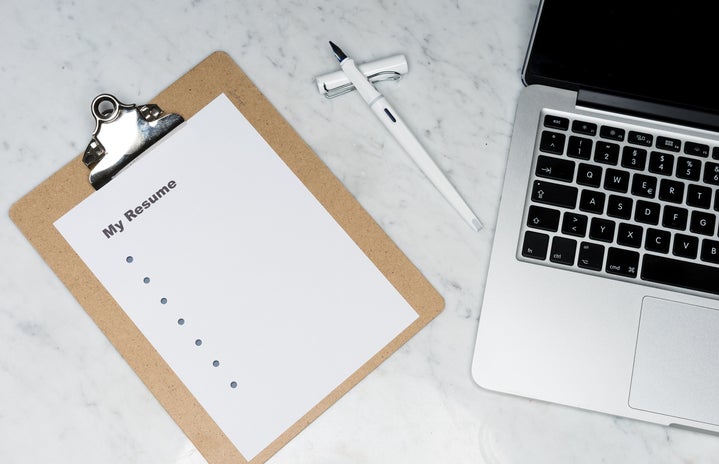*Preface* Always tailor your resumes to the specific job posting before submitting. Never submit a generalized resume—use key words from the job posting.
If you’ve clicked into this article, you’re most likely interested in learning about how to create an effective and impactful resume, and I am here to deliver. I will be summarizing some of the key tips and formatting suggestions to develop your resume (a few of the perks I’ve gained from being a resume and cover letter career advisor) in a concise, checklist format.
General Guidelines to Consider:
1. Appearance
- Ensure the format appears professional and is easy to read. You want to remain clear and concise as the employer is not going to invest much time into reading long sentences, so keep it to the point and impactful.
- Keep a consistent format throughout (headings, font, font size (which should never go below 10!), writing style) so as to not confuse the employer, and keep the look consistent and simple.
- Don’t go past two pages in length (if it’s too long, it may bore the employer).
2. Grammar
- NO spelling errors whatsoever.
- Specific language (such as that related to the industry or job posting, as mentioned in the preface).
- Appropriate use of specific verbs as opposed to general nouns (for past or present job experience).
3. Header
- Make sure to emphasize your name (in the same font and colour) by using a larger font size (I suggest size 18) from anywhere else on the resume.
- Include contact information that is up to date, and you are welcome to add a profile (such as a well-developed LinkedIn or GitHub).
Now, on to the order for formatting the resume. Begin with a Profile of Skills (or Skills Summary), your Education, your Experiences (can be separated into Academic, Work, Relevant, Volunteer, etc.), Activities and Accomplishments, and any additional headings you feel may fit (Projects, Awards, Publications, etc.). Sell yourself! Just make sure you stay within that two page limit.
You may notice that you can split your Experiences into different sections. I usually advise this to students because it can put more valuable or relevant experiences at the forefront. Remember, a resume must always be in REVERSE CHRONOLOGICAL ORDER (most to least recent). Therefore, if someone has past experience more relevant to the field they want to apply in, it may not catch the employer’s attention. But if we switch up our headings to “Relevant Work Experience” and “Additional Experience,” we can put our past experience at the top with the aligned heading.
4. Profile of Skills
- Highlight your skills and qualifications.
- Related to the job posting (this is the part you can tailor most based on the job description).
- Use bullet format.
5. Education
- Again, use reverse chronological order. Indicate the month and year of commencement and (expected) completion of your degree(s), as well as the name of the institution and its location beneath the degree name. Feel free to bold the title of your degree to stand out from the rest of the information below it.
- Spell out the degree name accurately.
- In bullet format, include minors, awards, research projects (if relevant), and STRONG GPAs (not a requirement but if it is above 85%, it may be a strong aspect of your profile).
- Don’t include any high school information after the second year of post-secondary study.
6. Experience
- Like with education, include the name of the experience (ex. Blood Drive Volunteer), and the dates (month and year) in reverse chronological order.
- Include organization name and location.
- Bullet formatting to indicate a description of your role/experience/responsibilities.
- Use ACTION WORDS to emphasize your impact (ex. Organized, lead, handled, overlooked).
- Describe any accomplishments (ex. Proven results of 10% increase in student grades as a tutor with a unique teaching plan for each student OR awarded tutor of the year).
- Include recent experiences.
7. Activities/Accomplishments
- Focus on those that are relevant to your specific job/career goal.
- Like education and experience, include date, title, location, and organization names.
- Reverse chronological order.
- Include any details such as award recipient criteria.
Again, you can add any additional headings you feel necessary as earlier discussed, as long as you try to remain within the two page limit. Some employers allow you to go over the two page limit as specified in the job posting. If this is the case, use this opportunity to sell yourself!
And that’s it! Here’s my quick little guide on how to build your resume! I hope it helps, and feel free to reach us at hc.uwindsor@hercampus.com if you have any questions regarding resume building. If you’re a University of Windsor student or alumni (within the last one year of graduation), you can also book a career appointment on mySuccess (named Quick Peer Review) with any of our Peers (including myself!), or a specific appointment with our Career Advisors.


